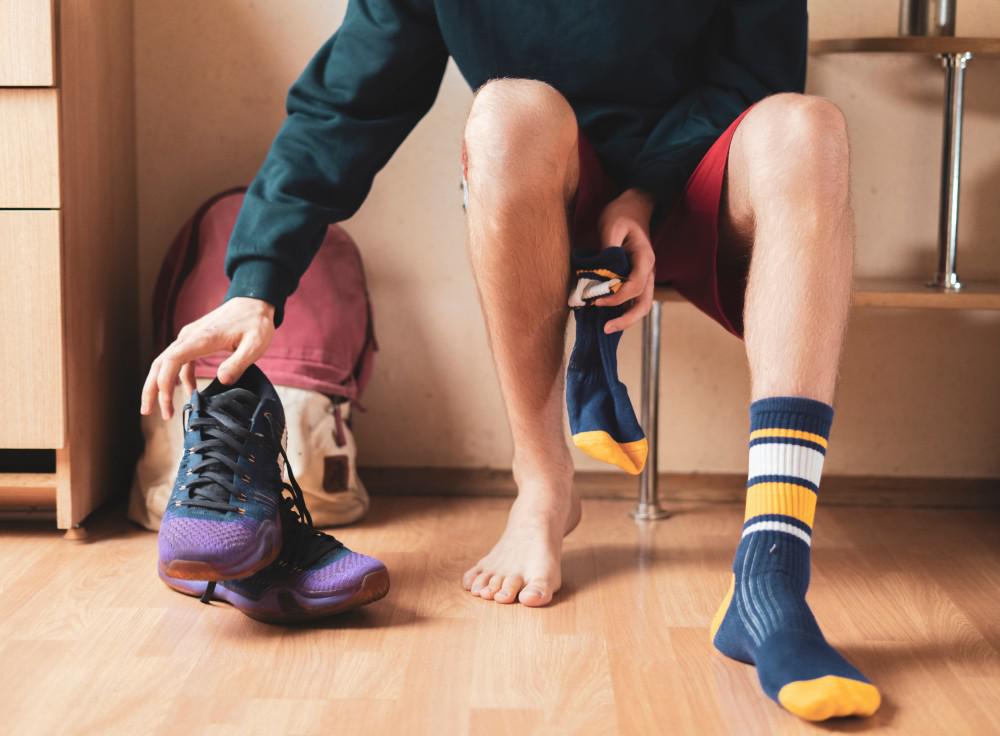
Summer is here, and with it comes vacations, trips to the pool, and picnics in the park. Sandal season should be a time of fun and relaxation, but if you contract athlete’s foot, you might be too preoccupied with your toes to enjoy the summer fun.
With more than 25 years of experience in podiatry, Jeffrey Kleis, DPM, is an expert in treating fungal infections, such as athlete’s foot. But prevention is the best medicine, so Dr. Kleis has curated a list of how you can prevent getting athlete’s foot.
What is athlete’s foot?
Athlete’s foot is a common, mildly contagious fungal infection that usually begins as an itchy red rash between the toes. Although the name brings to mind jockstraps and locker room floors, you can contract athlete’s foot in many places.
The fungus thrives in warm, moist environments — such as sweaty shoes and socks — and survives by ingesting a protein found in nails, hair, and skin called keratin. Although the feet are among its favorite breeding grounds, the fungus can spread to other parts of the body through direct contact or by contact with particles of skin left on towels, socks, shoes, or floors.
Symptoms of athlete’s foot include:
- An itchy, scaly rash between the toes
- Small, red blisters
- Dry scales or flaking on the soles and sides of the feet
- Oozing red sores in severe cases
While athlete’s foot typically starts between the toes, it can spread to other parts of the foot and body if left untreated.
Seven ways to prevent getting athlete’s foot
Here are Dr. Kleis’ top seven ways to prevent getting athlete’s foot this summer:
1. Practice good foot hygiene
Wash your feet with soap every day, and be sure to dry them thoroughly after washing. Keeping your feet dry is an important step in foot hygiene, so if your feet sweat, be sure to dry them throughout the day.
2. Choose footwear wisely
The fungus that causes athlete’s foot loves warm, moist places. To keep the fungus at bay, choose socks and shoes that allow your feet to breathe and don’t trap moisture. Wear sandals when possible, which will help dry out sweat and keep skin temperature low. Choose socks made of natural materials, such as cotton, and avoid shoes made from man-made materials, such as vinyl or plastic, which can trap heat and moisture.
3. Keep your shoes to yourself
While sharing is generally good, if you want to avoid athlete’s foot, keep your shoes to yourself. And if you live with or do laundry with someone who has the condition, keep your socks, towels, and other laundry items separate. And when you wash your clothes, use hot water. Research shows that the fungus can survive in washing machines unless hot water is used.
4. Remove and disinfect gym shoes and bags
After working out, be sure to change your shoes immediately, even if you’re waiting until later to shower. Clean and disinfect your shoes and gym bags after each use with hot water or disinfectant wipes or sprays. And be sure to dry the items completely.
5. Cover the soles of your feet
It can be tempting to walk around public pools, spas, showers, or hotel rooms without shoes. But to prevent getting athlete’s foot, cover the soles of your feet. Try wearing flip flops, sandals, or water shoes instead.
6. Keep nails short and clean
Nails are the perfect environment for the fungus. So to keep athlete’s foot at bay, keep your nails short and clean.
7. If you suspect athlete’s foot, act fast
If you do develop signs of athlete’s foot, get an over-the-counter antifungal spray or cream, and use it regularly, following the instructions on the package. Wash your socks in hot water — with bleach when possible — and disinfect any contaminated shoes and towels. Early treatment can help prevent athlete’s foot from spreading.
Seek a doctor to avoid complications
In some cases, over-the-counter treatments aren’t enough. Seeking professional help can alleviate your symptoms and reduce the risk of it spreading. Dr. Kleis and his team can create a personalized treatment plan and help you avoid the complications associated with athlete’s foot.
To learn more about preventing athlete’s foot or to get help if you think you have it, book an appointment online or over the phone with Jeffrey Kleis, DPM today.
